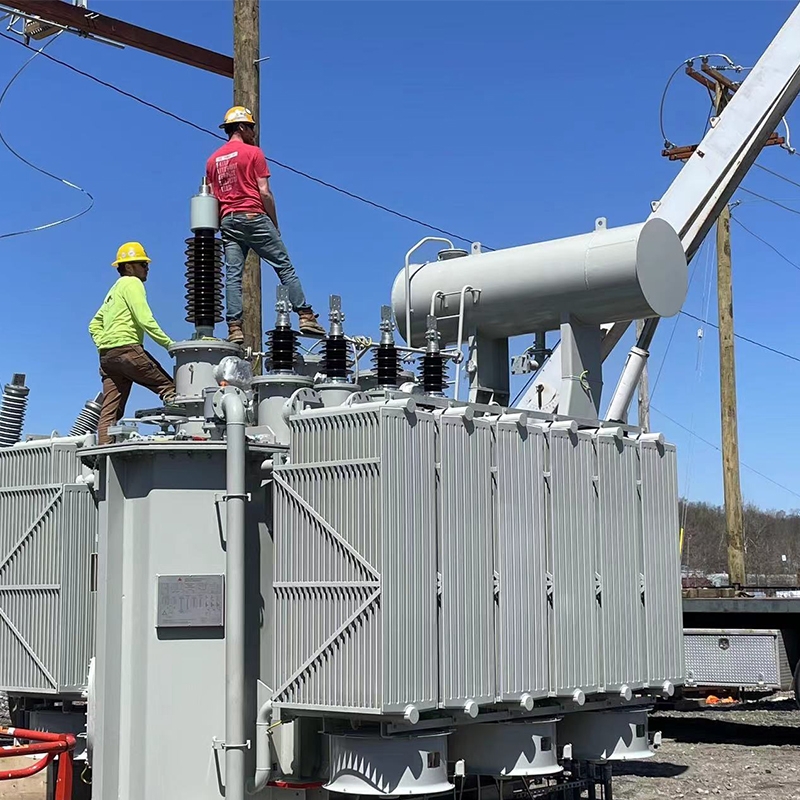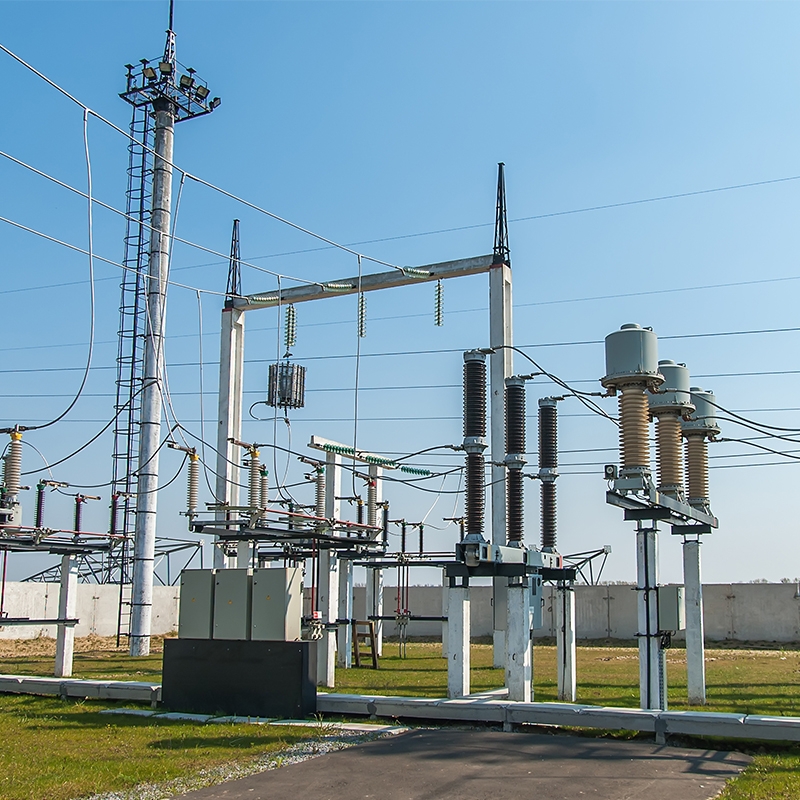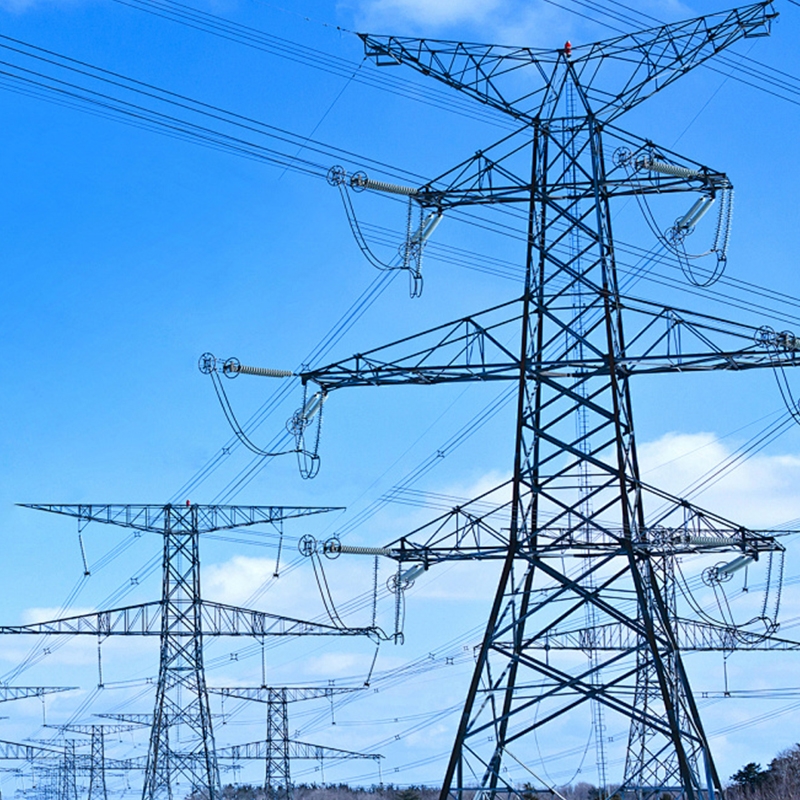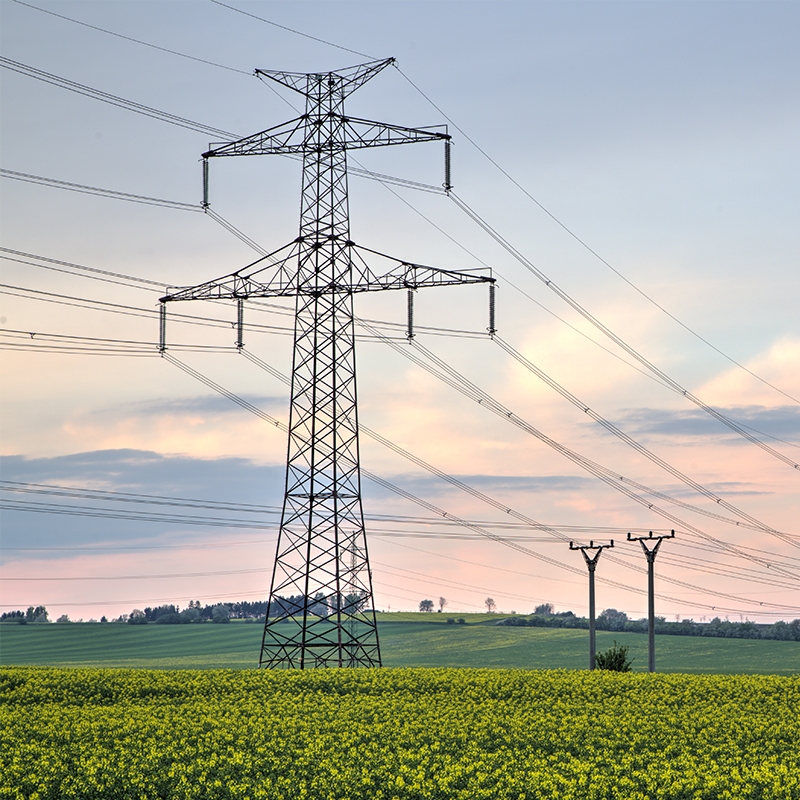Transformer protection knowledge that power workers must know
Transformers are static equipment that operate continuously. They operate relatively reliably and have a lower chance of failure. However, as the vast majority of transformers are installed outdoors and are affected by the loads they bear during operation as well as short-circuit faults in the power system, various faults and abnormal situations are inevitable during operation.
I. Common Faults and Abnormalities of Transformers
The faults of transformers can be classified into internal faults and external faults.
Internal faults refer to the faults that occur inside the box shell, including interphase short circuit faults of the winding, inter-turn short circuit faults of one phase winding, short circuit faults between the winding and the core, and open wire faults of the winding, etc.
External faults refer to various interphase short-circuit faults between the external lead-out lines of the transformer and single-phase grounding faults that occur when the insulating bushings of the lead-out lines flashover through the box shell.
The malfunction of a transformer is very harmful. Especially when internal faults occur, the high-temperature arc generated by short-circuit current not only burns the insulation of the transformer windings and the core, but also causes the transformer oil to decompose due to heat, generating a large amount of gas, which may lead to deformation or even explosion of the transformer casing. Therefore, when the transformer malfunctions, it must be cut off.
The abnormal conditions of transformers mainly include overloading, oil level drop, overcurrent caused by external short circuit, excessively high oil temperature of transformers in operation, excessively high winding temperature, excessively high transformer pressure, and cooling system failure, etc. When the transformer is in an abnormal operating state, an alarm signal should be given.
Ii. Configuration of Transformer Protection
The main protections for short-circuit faults mainly include longitudinal differential protection, heavy gas protection, etc.
Backup protection for short-circuit faults: mainly includes compound voltage lockout overcurrent protection, zero-sequence (directional) overcurrent protection, low impedance protection, etc.
Abnormal operation protection: mainly includes overload protection, over-excitation protection, light gas protection, neutral point gap protection, temperature, oil level and cooling system fault protection, etc.
Iii. Non-electrical Protection
Transformer protection composed of non-electrical quantities such as oil, gas and temperature of the transformer is called non-electrical quantity protection. The main protections include gas protection, pressure protection, temperature protection, oil level protection and full shutdown protection of the cooler. Non-electrical protection will trip or send a message as needed on site.
1. Gas protection
When a fault occurs inside a transformer, due to the effect of short-circuit current and arc at the short-circuit point, a large amount of gas will be generated inside the transformer, and at the same time, the oil flow velocity of the transformer will increase. The protection achieved by using gas and oil flow is called gas protection.
(1) Light gas protection: When a minor fault or abnormality occurs inside the transformer, local overheating occurs at the fault point, causing part of the oil to expand. The gas in the oil forms bubbles and enters the gas relay, triggering the light gas protection to act and issue a light gas signal.
(2) Heavy gas protection: When a serious fault occurs in the transformer oil tank, the fault current is large, and the arc causes a large amount of transformer oil to decompose, generating a large amount of gas and oil flow, which impacts the baffle plate and causes the heavy gas secondary protection to act, sending out a heavy gas signal and tripping the outlet, thus cutting off the transformer.
(3) Heavy gas protection is the main protection against internal faults in the oil tank. It can reflect various faults inside the transformer. When a transformer experiences a small inter-turn short circuit, although the fault current is large, the differential current generated in the differential protection may not be significant, and the differential protection may fail to operate. Therefore, for internal faults in transformers, it is necessary to rely on heavy gas protection to remove the faults.
2. Pressure protection
Pressure protection is also the main protection against internal faults in the transformer oil tank. It contains pressure release and pressure sudden change protection, and is used to reflect the pressure of transformer oil.
3. Temperature and oil level protection
When the temperature of the transformer rises to the warning value, the temperature protection sends out an alarm signal and starts the standby cooler. When the transformer leaks oil or the oil level drops for other reasons, the oil level protection will act and issue an alarm signal.
4. Complete shutdown protection for the cooler
When all the coolers of a running transformer stop, the temperature of the transformer will rise. If not dealt with in time, it may cause damage to the insulation of the transformer windings. Therefore, when the cooler is completely shut down during the operation of the transformer, this protection issues an alarm signal and cuts off the transformer after a long delay.
Iv. Differential Protection
Transformer differential protection is the main protection for the transformer's electrical quantity, and its protection range is the parts surrounded by the current transformers on each side. When faults such as interphase short circuits and inter-turn short circuits occur within this range, the differential protection must act.
1. Inrush current in transformer excitation
The excitation current generated when the transformer is airdropped is called the excitation inrush current. The magnitude of the excitation inrush current is related to factors such as the structure of the transformer, the closing Angle, capacity, and the residual magnetism before closing. Measurements show that when the transformer is airdropped, the inrush current due to the saturation excitation of the core is very large, usually 2 to 6 times the rated current, and can reach more than 8 times at the maximum. Since the excitation inrush current only flows into the transformer on the charging side, a large differential current will be generated in the differential circuit, causing the differential protection to malfunction.
The excitation inrush current has the following characteristics: A. The inrush current value is very large and contains obvious aperiodic components; B. The waveform is pointed and intermittent; C. It contains obvious high-order harmonic components, especially the second harmonic components are the most prominent. D. The inrush current in excitation is attenuated.
Based on the above characteristics of the excitation inrush current, to prevent the transformer differential protection from maloperating due to the excitation inrush current, in engineering, three principles are utilized to achieve the interlocking of differential protection: high second harmonic content, asymmetric waveform, and large waveform interruption Angle.
2. Principle of Second Harmonic braking
The essence of the second harmonic braking is to use the second harmonic component in the differential current to determine whether the differential current is the fault current or the excitation inrush current. When the percentage of the second harmonic component to the fundamental component is greater than a certain value (usually 20%), it is determined that the differential current is caused by the excitation inrush current, and the differential protection is locked.
Therefore, the larger the second harmonic braking ratio is, the more second harmonic current is allowed to be contained in the fundamental wave, and the worse the braking effect will be.
3. Differential instantaneous protection
When a serious fault occurs inside the transformer and the fault current is large, causing the CT to saturate, the secondary current of the CT also contains a large amount of harmonic components. According to the above description, this is very likely to cause the differential protection to lock or delay action due to the braking of the second harmonic. This will seriously damage the transformer. To solve this problem, differential instantaneous protection is usually set up.
The differential rate-breaking element is actually a high-set differential element for longitudinal differential protection. Unlike common differential elements, it reflects the effective value of the differential current. Regardless of the waveform of the differential current or the magnitude of the harmonic components it contains, as long as the effective value of the differential current exceeds the setting value of the differential instantaneous break (usually higher than the setting value of the differential protection), it will immediately act to cut off the transformer without going through the locking of criteria such as excitation inrush current.
V. Backup Protection of Transformers
This is a brief introduction to the main protection of transformers. Let's continue to introduce the backup protection of transformers. There are many types of backup protection configurations for transformers. Here, we mainly briefly introduce two types of backup protection for transformers: overcurrent protection with overvoltage interlock and grounding protection.
1. Overcurrent protection with double pressure interlock
Overcurrent protection with overvoltage interlock is the backup protection for interphase short-circuit faults in large and medium-sized transformers. It is applicable to step-up transformers, system tie transformers and step-down transformers where overcurrent protection cannot meet the sensitivity requirements. The composite voltage composed of negative sequence voltage and low voltage can reflect various faults within the protection range, reduce the setting value of overcurrent protection and improve the sensitivity.
Compound voltage overcurrent protection is composed of compound voltage elements, overcurrent elements and time elements. The connection current for protection is the secondary three-phase current of the CT on the transformer's own side, and the connection voltage is the secondary three-phase voltage of the PT on the transformer's own side or other sides. For microcomputer protection, the voltage on this side can be provided to other sides for use through software. This ensures that overcurrent protection can still be used when any PT on any side is under maintenance.
2. Grounding protection of the transformer
The backup protection for grounding short-circuit faults of large and medium-sized transformers usually includes: zero-sequence overcurrent protection, zero-sequence overvoltage protection, gap protection, etc. The following is a brief introduction based on the three different grounding methods of the neutral point.
(1) The neutral point is directly grounded
Transformers with a voltage of 110kV or above and a directly grounded neutral point should be equipped with zero-sequence current protection to reflect grounding faults on the side of the high-current grounding system. For transformers that are directly grounded on both the high and middle sides, the zero-sequence current protection should have a direction, which is preferably directed towards the busbars on each side.
The principle of zero-sequence current protection is similar to that of zero-sequence protection in circuits. The zero-sequence current can be taken from the secondary current of the neutral point CT, or it can be self-generated from the secondary three-phase current of the local CT. The zero-sequence voltage connected to the directional element can be taken from the open delta voltage of the PT on this side, or it can be self-generated from the secondary three-phase voltage on this side. In microcomputer protection devices, the self-production method is mainly adopted.
For large three-winding transformers, zero-sequence current protection can adopt a three-stage type. Among them, sections I and II have directions, while section III does not have directions. Each section generally has two levels of delay. A shorter delay is used to narrow down the fault range (tripping the busbar or strip side switch), and a longer delay is used to cut off the transformer (tripping the three-side switch). The specific protection configuration is determined based on the actual situation.
After the zero-sequence direction current protection phase I or II operates, the main unit or the local side switch is tripped for a relatively short delay t1 or t3 to reduce the affected area of the fault. If the fault still exists, the three-side switch is tripped for a relatively long delay t2 or t4 to cut off the transformer. Section III has no direction and directly cuts off the transformer through a delay.
(2) Neutral point ungrounded mode
Zero-sequence current passing through the neutral point of the transformer forms a zero-sequence circuit. However, if the neutral points of all transformers are grounded, the short-circuit current at the grounding points will be diverted to each transformer, which will cause the sensitivity of zero-sequence overcurrent protection to decrease. Therefore, in order to limit the zero-sequence current within a certain range, there are regulations on the number of transformers operating with the neutral point grounded.
For transformers operating without grounding, in order to prevent overvoltage damage to the transformer caused by gap arcs at the fault point when a grounding fault occurs, zero-sequence voltage protection should be configured.
Due to the high insulation level of the neutral point of fully insulated transformers, when a grounding fault occurs in the system, the zero-sequence current protection will first remove the transformer with a grounded neutral point. If the fault still exists, the zero-sequence voltage protection will then remove the transformer with an ungrounded neutral point.
(3) The neutral point is grounded through the discharge gap
All ultra-high voltage transformers are semi-insulated transformers, and the insulation of their neutral point coils to ground is weaker than that of other parts. The neutral point insulation is prone to breakdown. Therefore, gap protection needs to be configured.
The function of gap protection is to ensure the insulation safety of the neutral point of an ungrounded transformer.
Gap protection is achieved by using the gap current 3I0 flowing through the neutral point of the transformer and the open delta voltage 3U0 of the busbar PT as the criteria.
If the neutral point of the fault is elevated to the location, the gap breakdown occurs, generating a large gap current of 3I0. At this time, the gap protection operates, and the transformer is cut off after a delay. In addition, when a grounding fault occurs in the system, the zero-sequence protection of the transformer operating with a neutral point grounded will act, and the transformer with a neutral point grounded will be cut off first. After the system loses the grounding point, if the fault still exists, the open delta voltage 3U0 of the busbar PT will be very large, and at this time, the gap protection will also act.




